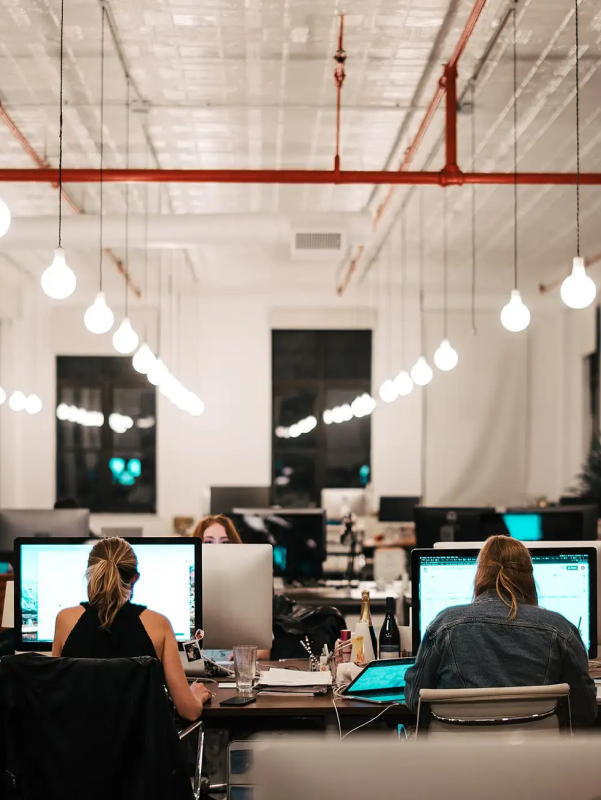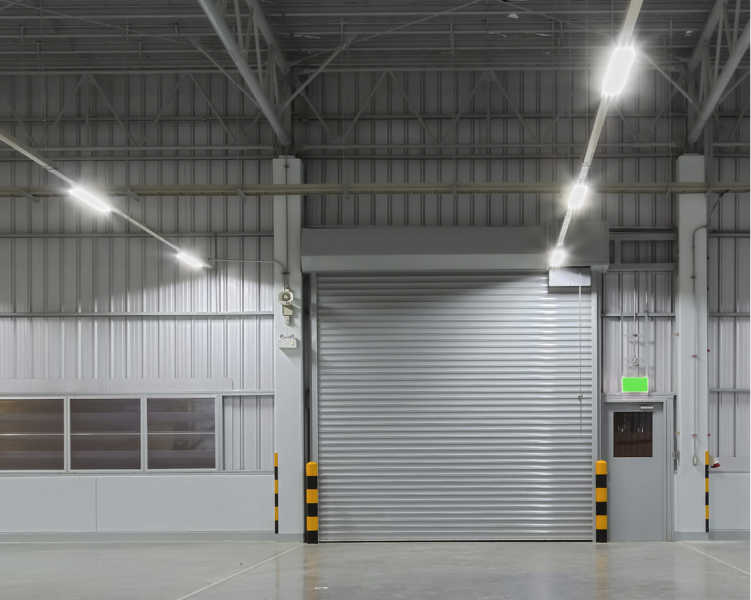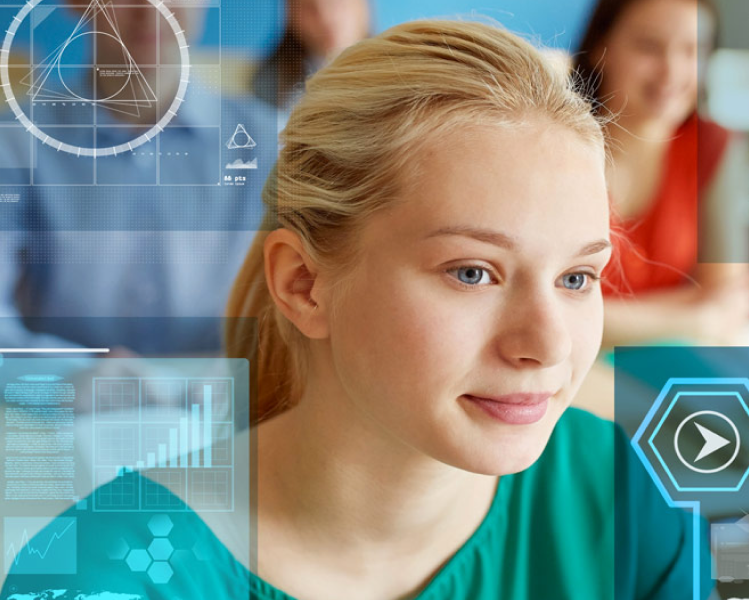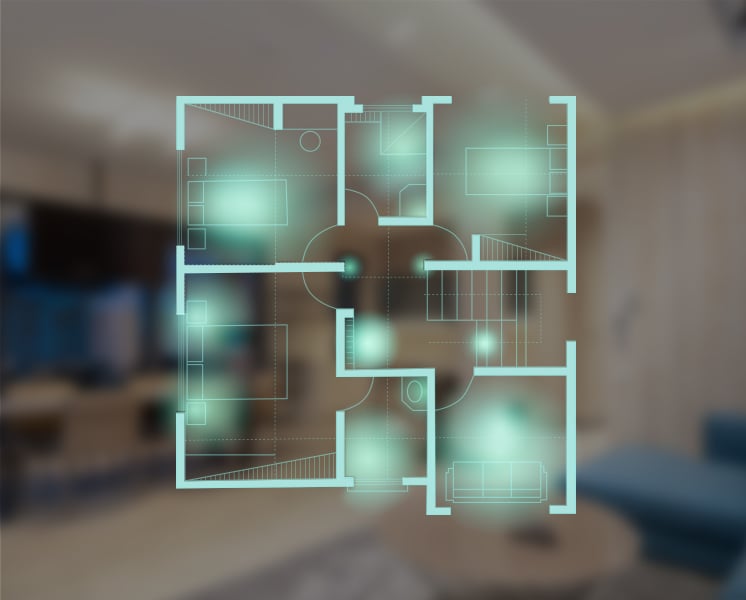What virtual communication technologies do you prefer? Which office equipment do you use to make your workstation better? How can you encourage your team to use hybrid work digitally? Thanks to the technology's quick development, you can turn your company into a smart workplace. Today's workforce is accustomed to using online communication tools like Slack, MS Teams, and Zoom.
Smart technology supports you and your employees while you and they are on-site, in addition to helping to fulfill the needs of remote staff. The way we work has undergone a radical change, from automated HVAC to desk booking software and virtual reality training. And what exactly is a smart office? What does it look like in practice, and how does it help thriving businesses? Here are the essential details for successfully implementing the trends for the future of work by striking a balance between technological and human capabilities.
Today, we will look at something considered a given but can provide much value and support to professionals - lighting! Smart lighting solutions need smart integration. Evvr offers innovative products and solutions to problems to help workplaces devise better and smarter lighting solutions. Know all about the Evvr revolution !
- What Is A Smart Workplace?
- Benefits of a Smart & Dynamic Workplace
- Things To Keep In Mind For Smart Workplace Lighting
- Evvr In-Wall Relay Switch - Making Your Workplace Brighter & Smarter
What Is A Smart Workplace?
A smart workplace is one where technology enables employees to operate more effectively, quickly, and intelligently. People should be able to work in an environment that suits their requirements and should encourage diversity in the workplace. Employees can complete menial jobs more effectively and quickly thanks to beacons, sensors, and smartphone apps, which frees up their time to work on expanding their companies and developing new ideas.
Users can readily identify which desks are occupied by whom, where there is available locker space, and which meeting rooms are accessible in the desired location by utilizing, for instance, a workplace application that displays an interactive floor plan. In addition, technology improves communication in a smart office. Technology makes it easier for people to collaborate, exchange information, and work in teams. Smart solutions also make working remotely much easier.

Benefits of a Smart & Dynamic Workplace
Enhanced Productivity
According to numerous studies, businesses that make significant investments in creating cutting-edge infrastructure enjoy greater productivity and overall growth. A high-tech workplace is a novel technique to increase the level of innovation and creativity at your place of business.
97% of respondents indicated that the workplace was crucial to staff productivity and also had a substantial impact on employee happiness, according to Gartner's research on smart buildings.

Better Work Environment
High productivity and the accomplishment of organizational goals result from a tranquil and productive work environment. Real-time data analysis and cost savings are advantages that a smart workplace offers both the business and the employee (greater flexibility in where and when to work, improved work/life balance).
Assured Sustainability
Smart buildings' right instruments are available to measure and optimize the building's energy use. Smart building systems offer building owners numerous opportunities to cut costs, increase energy efficiency, secure energy supply, and reduce carbon emissions. These systems can cover energy in electricity, heating, and cooling.
Resource Management
Any business' ability to manage its time effectively decides whether it will succeed or fail. You may raise productivity and thus your business results by introducing clever tools that save your workers time.
Imagine if you could deploy software that, for instance, made it easier for employees to identify a suitable workplace, locker, or meeting area in less time, saving each employee 20 minutes each month. This indicates that you save 4 hours annually. Four hours might not seem like much, but when you multiply it by the number of employees at your company, you will see that even modest enhancements result in huge revenues.
Progressive Communication
Poor communication and information flow are frequently blamed for underperforming organizations and companies. Utilizing cutting-edge tools in your smart workplace promotes stability and efficient communication inside your company. With smart office solutions, you can foster a cooperative work environment that increases employee retention. The following section will discuss how to use your smart workplace to attract and keep the best talent.
Things To Keep In Mind For Smart Workplace Lighting
It cannot be easy to decide which lighting is appropriate for the business because so many different light hues and fixtures are available. You should follow these recommendations and recommendations to choose workplace lighting that will inspire, engage, and maintain the health of your staff.
Businesses need a smart infrastructure to control and communicate with different lights for better productivity and efficiency. Evvr offers Evvr Center Lite and Evvr Pad S for complete control. These products guarantee control and security for all the core and peripheral appliances.

LED Vs. Fluorescent Lights
LED lights have recently gained popularity as an energy-efficient replacement for fluorescent lights. LED lights may initially cost a little bit more than fluorescent ones, but they will save business money when used in an office. This is because LED lights typically last longer than fluorescent lights and don't emit extra energy as infrared radiation as fluorescent lights do.
Employee wellness may also benefit from LED lighting. Fluorescent lights are unlikely to induce headaches, but they may create migraine symptoms in persons predisposed to them. Fluorescent lighting prevents melatonin production and can further disrupt sleep patterns because workers frequently linger at the office past dusk. However, LED lights are a better option for workers' health because they can typically be lowered to match the time of day and the season.
Natural Light Is The Best Light
According to a study by Cornell University's department of design and environmental analysis, workers exposed to natural light in the workplace reported an 84% reduction in eye strain, headaches, and blurred vision. Additionally, according to research from the American Academy of Sleep Medicine, exposure to natural light helps balance hormones. It maintains a healthy circadian rhythm, promoting restful sleep at night and productive work the following day.
To maximize the effects of direct sunshine, we examine factors such as ceiling height, building orientation, latitude, and nearby building impediments while designing structures. Common areas rather than private offices are often assigned to spaces with windows so that as many people as possible can benefit from natural light.
Specifications of Office Lighting
Depending on how the office will be used, the color and temperature of the lighting should change. "The proper quantity of light and the health implications of different spectrums and intensity of light are essential and are things we consider in our design," says one lighting expert.
Warmer yellow or orange lighting is typically preferable for unwinding, but cooler blue and white lighting is excellent for working, waking up, and focusing. Lighting hue and temperature should change according to the time of day. Morning light should ideally be brighter and cooler to keep workers aware and focused. The lighting should get cozier throughout the day to aid the employees' ability to unwind.
Setting The Right Brightness Level
The task you're working on is the most crucial factor in determining brightness. It makes sense to have natural light flooding common rooms and kitchens because it is diffuse, and employees aren't typically looking at devices in these locations.
We are, however, constrained by our technology in offices. The brightness of natural light can overpower what we can see [on laptop screens] since the light from laptops and desktops is nowhere near as strong and dazzling as the sun. Desks and workplaces need a more regulated atmosphere— where part of the sun's intensity is screened out or muted.
Energy Efficiency Goes A Long Way
Useful energy-saving light bulbs include compact fluorescent lamps, halogen incandescent bulbs, and LEDs (CFLs). Installing motion-sensor lighting in frequently used spaces, such as restrooms, basements, and supply closets, is another option to save energy. By preventing lights from being left on while no one is in the room, setting lights on a timer can help save money. Additionally, putting dimmers enables you to lower the lights when less brightness is needed for your task.
Evvr In-Wall Relay Switch - Making Your Workplace Brighter & Smarter
Conventional power outlets have their limitations. Evvr In-Wall Relay Switch offers a simple, no-neutral bridge to convert a traditional switch into a smart switch and it's also compatible with HomeKit. After simple installation, you can control and customize workplace lighting with ease and comfort. This is a must-have if you do not want to spend a fortune on infrastructural renovations. Evvr can offer you a comprehensive smart home solution whether you are an integrator, professional installer, distributor, or DIYer. Get in touch with us and become our partner today!












